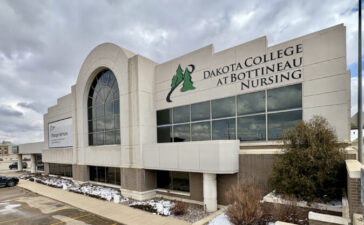
U.S. Sen. Richard Blumenthal has announced millions in federal funding to fight tick-borne diseases such as Lyme, Babesiosis, and Powassan across the country. Among the funding will be $239,000 for the Connecticut Agricultural Experiment Station for research on ticks.
Jason White, director of the experiment station, said the station was unique in the nation as it’s the only one that is independent of state government and as a result their mission is different.
Adding that their motto is “putting science to work for society” and that their vector borne disease program is a perfect example of that.
“Out tick-borne disease and surveillance program goes back many years and over that time there has been no greater advocate for or work specifically or for the public health issues and concerns associated with tick borne illness than Senator Blumenthal.”
Cases of diseases caused by ticks have more than doubled in the northeast in the last 10 years.
In 2023 in Connecticut, ticks submitted to the Experiment Station for testing, 26.5% tested positive for Lyme Disease, 8.3% for Babesiosis and 2.4% for anaplasmosis.
“The geographic range of these ticks has substantially expanded over the past decade,” said Goudarz Molaei, head of the station’s tick monitoring program.
“Right now, tick borne diseases account for more than 90% of all vector borne diseases here in Connecticut and across the northeast. That figure is now 450,000 cases annually.”

“Connecticut has witnessed range expansion and establishment of three important tick species, including Longhorn Tick, Gulf Coast Tick and Lone Star Tick, which combined with the pervasive black legged ticks is responsible for seven pathogens, among them Lyme Disease, Babesiosis, Anaplasmosis and others.”
Molaei said despite the increase in the tick populations the Station has made significant progress in their various programs.
Increased and improved tick testing capacity using high throughput equipment.
New techniques to identify the various tick-borne diseases in the state.
Molaei also stressed they were looking into why rural areas of the state have, over the last few years, submitted less ticks for their surveillance program, bearing in mind they are the worst affected, and they have recruited four graduate students from Yale’s School of Public Health to assist them and address ways to remedy this situation.
He also said they were looking into the increase in the Lonestar Tick population and a condition known as Alpha-gal Syndrome, which makes people allergic to red meat and other products made from mammals, as neighboring states have listed this as their third highest tick-borne condition.
Connecticut has instances of Alpha-gal Syndrome, he said, but currently it is unclear how wide a problem this disease is in the state.
Blumenthal thanked the experiment station for their continued work and said he was in awe at what they do.
“I am deeply impressed by the progress that you’ve made. The contributions that the Agricultural Experiment Station is making in real-time to scientific progress against tick-borne pathogens. They’re called pathogens for a reason, they destroy lives,” he said. “The collection of tick-borne diseases debilitates and even destroy lives in Connecticut and all around the country. And they are growing worse. The ticks are threatening to win. Part of the reason is climate change. Ticks are moving northward.”
He added it is alarming and deeply frightening.
And although he said his speech sounded repetitive from years past, now, he said, the federal government is investing in tick-borne disease like never before.
He mentioned funding that includes $27 million in this year’s budget for the National Center for Emerging and Zoonotic Infectious Diseases, $5 million for the LymeX initiative, which he said didn’t exist a few years ago and $100 million for Lyme and tick-borne disease research to the Department of Health and Human Services.
Blumenthal went on to say that the tragedy of the situation is these diseases can be combated and much of the situation goes unreported or undiagnosed.
Saying that many local public health departments still under report the numbers in their areas with diseases like Babesiosis having jumped 338% in Connecticut in the last few years alone.
“I believe the new funding can make a tremendous difference.”

















